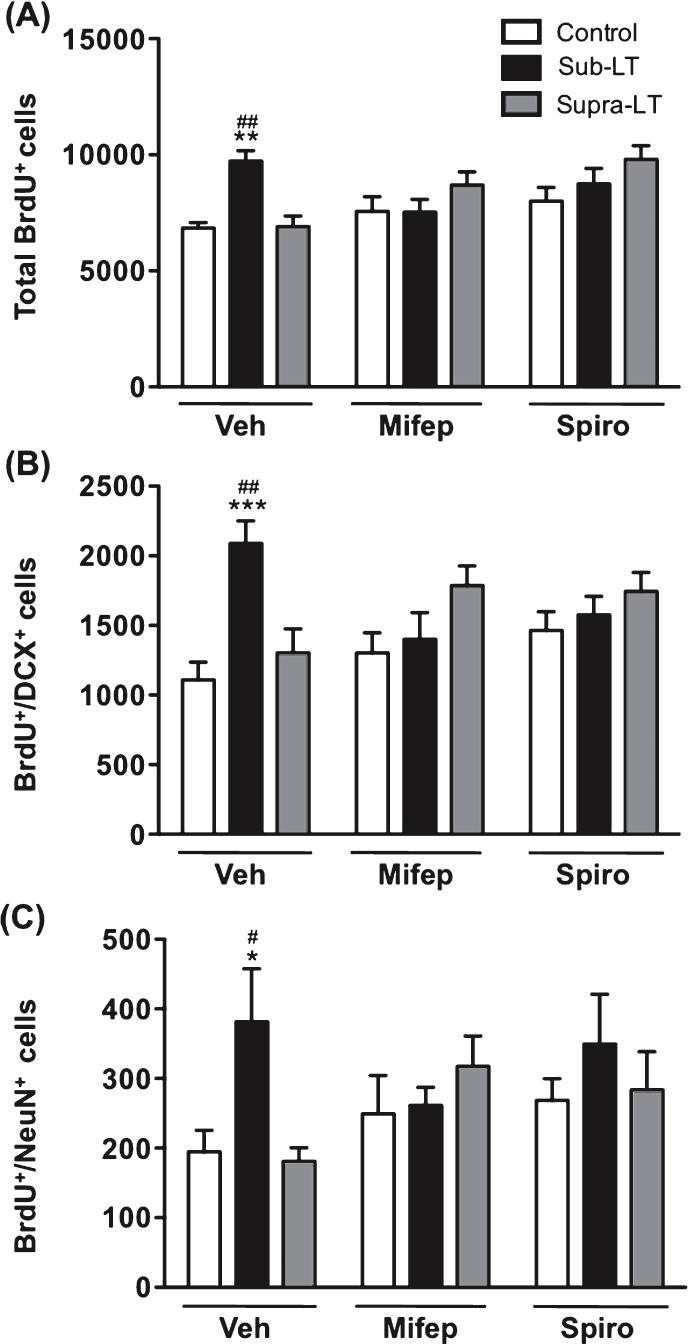Fig.4.
Effects of glucocorticoid receptor antagonists on exercise-induced adult hippocampal neurogenesis The role of glucocorticoid signaling was evaluated with the injection of the mineralocorticoid receptor (MR) antagonist spironolactone, and the glucocorticoid receptor (GR) antagonist mifepristone. (A) Total number of BrdU+ cells. There was a significant main effect of treadmill exercise (F (2,49) = 4.15, p < 0.05), but not glucocorticoid receptor antagonist (F (2,49) = 3.07, p = 0.06), and a significant glucocorticoid receptor antagonist×treadmill exercise interaction (F (4,49) = 4.7, p < 0.01). (B) Number of BrdU+/DCX+ cells. There was a significant main effect of treadmill exercise (F (2,49) = 5.59, p < 0.01), but not glucocorticoid receptor antagonist (F (2,49) = 3.72, p = 0.69), and a significant glucocorticoid receptor antagonist×treadmill exercise interaction (F (4,49) = 4.86, p < 0.01). (C) Number of BrdU+/NeuN+ cells in the dentate gyrus. There was a significant main effect of treadmill exercise (F (2,47) = 3.23, p < 0.05), but not glucocorticoid receptor antagonist (F (2,47) = 0.61, p = 0.55), and no significant glucocorticoid receptor antagonist×treadmill exercise interaction (F (4,47) = 1.87, p = 0.14). Data represent the mean ± SEM (n = 6 -7 mice). *, p < 0.05, **, p < 0.01, ***, p < 0.001 in comparison with respective control mice and #, p < 0.05, ##, p < 0.01 in comparison with supra-LT (two-way ANOVA and Bonferroni post hoc tests).

